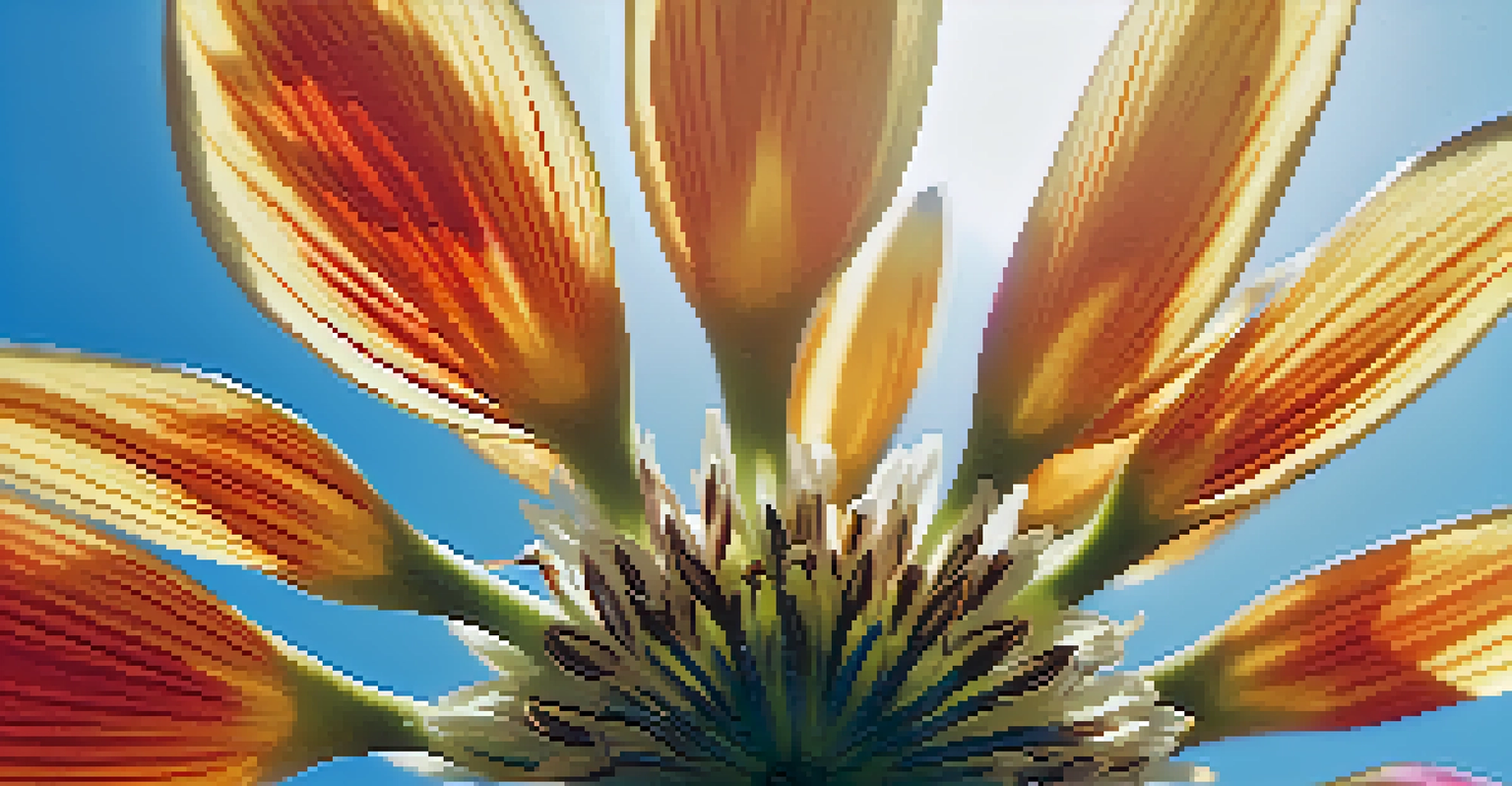Mastering Natural Light for Stunning Plant Photography Shots

Understanding Natural Light and Its Importance in Photography
Natural light plays a crucial role in photography, especially when capturing the beauty of plants. It enhances colors, textures, and the overall mood of your shots. By understanding how light works, you can take your plant photography to the next level.
Natural light is the best light for photography, it brings out the colors and details that artificial light cannot.
The quality of light changes throughout the day, affecting how your subjects appear. For instance, the soft light during golden hour—shortly after sunrise or before sunset—can make your plants look ethereal. Conversely, harsh midday sun can create unflattering shadows and washed-out colors.
By mastering natural light, you can create stunning images that highlight the unique characteristics of each plant. Learning to observe and adapt to changing light conditions allows you to capture your subjects in the best possible way.
The Best Times of Day for Plant Photography
Timing is everything in photography, particularly when it comes to natural light. Early mornings and late afternoons are often considered the golden hours for capturing plant images. The light during these times is softer and warmer, perfect for showcasing vibrant colors.

During midday, the sun is directly overhead, creating harsh shadows and high contrast. While this can be challenging, some photographers embrace this light for certain stylistic effects. However, for most plant photography, avoiding these hours can yield better results.
Natural Light Shapes Plant Photography
Understanding how natural light affects your images can significantly enhance the beauty and mood of your plant photography.
Experimenting with different times of day can help you discover what works best for your style. By being mindful of the sun’s position, you can ensure your plant photography shines, literally and figuratively.
Using Diffusers and Reflectors for Softening Light
Sometimes, even the best natural light can be too harsh for plant photography. This is where diffusers come into play. A simple white sheet or a commercial diffuser can soften the light, creating a more even illumination that’s flattering for your plants.
Photography is the story I fail to put into words.
Reflectors can also be incredibly useful. By bouncing light back onto your subject, you can brighten up dark areas and enhance colors. You don’t need fancy equipment; a piece of cardboard wrapped in aluminum foil can do the trick!
Integrating diffusers and reflectors into your setup can elevate your photography. These tools help you better control light quality, ensuring your plant shots are nothing short of stunning.
Finding the Right Background for Your Plants
Choosing the right background is just as important as working with natural light. A cluttered or distracting background can take attention away from your plant. Instead, look for simple, complementary backdrops that highlight your subject's colors and shapes.
Natural settings, like gardens or forests, often provide beautiful backgrounds. However, you can also create a clean background by using a plain wall or fabric. The key is to ensure that the background enhances rather than competes with your plant.
Optimal Times for Capturing Plants
Shooting during early mornings or late afternoons allows you to take advantage of softer, warmer light for more vibrant plant images.
Taking the time to find the perfect background can dramatically improve your images. When the focus is on the plant itself, your photography will resonate more with viewers.
Mastering Angles and Perspectives for Impact
The angle from which you shoot can completely change the story of your plant photography. While eye-level shots are common, don’t hesitate to experiment with different perspectives. Shooting from above, below, or even at an angle can reveal unique details and textures.
For instance, photographing a plant from below can create a dramatic effect, especially when backlit by the sun. This angle often highlights the intricate structure of leaves and petals, making for a striking image.
Finding the right perspective can transform an ordinary shot into something extraordinary. Keep your camera moving and your mind open to discover new ways to capture the natural beauty of plants.
The Role of Shadows in Plant Photography
Shadows are often overlooked in plant photography, yet they can add depth and dimension to your images. They can create contrast and highlight the shapes of leaves and flowers, making your compositions more dynamic. Learning to embrace shadows rather than avoid them can be a game-changer.
Consider how shadows interact with your subject. A well-placed shadow can create a sense of drama, while a soft shadow can add a gentle touch. Experimenting with different light angles can help you find the balance you’re looking for.
Editing Enhances Natural Light Shots
Skillful editing can elevate your plant photos by fine-tuning brightness and colors, showcasing the stunning effects of natural light.
By incorporating shadows into your photography, you can create more visually engaging images. This added layer can tell a story, drawing viewers into the world of your plants.
Editing Techniques to Enhance Natural Light Photos
Editing is a crucial step in plant photography, allowing you to enhance the beauty captured in natural light. Simple adjustments to brightness, contrast, and saturation can make your images pop. Even subtle tweaks can elevate your work, bringing out the details you want to emphasize.
Software like Lightroom or Photoshop offers powerful tools for fine-tuning your photos. You can selectively brighten areas, enhance colors, or apply filters that reflect your artistic vision. The key is to maintain a natural look while enhancing the beauty of your plants.

Remember, editing should enhance your photography, not overpower it. A well-edited image can showcase the stunning effects of natural light, leaving viewers in awe of your plant photography.